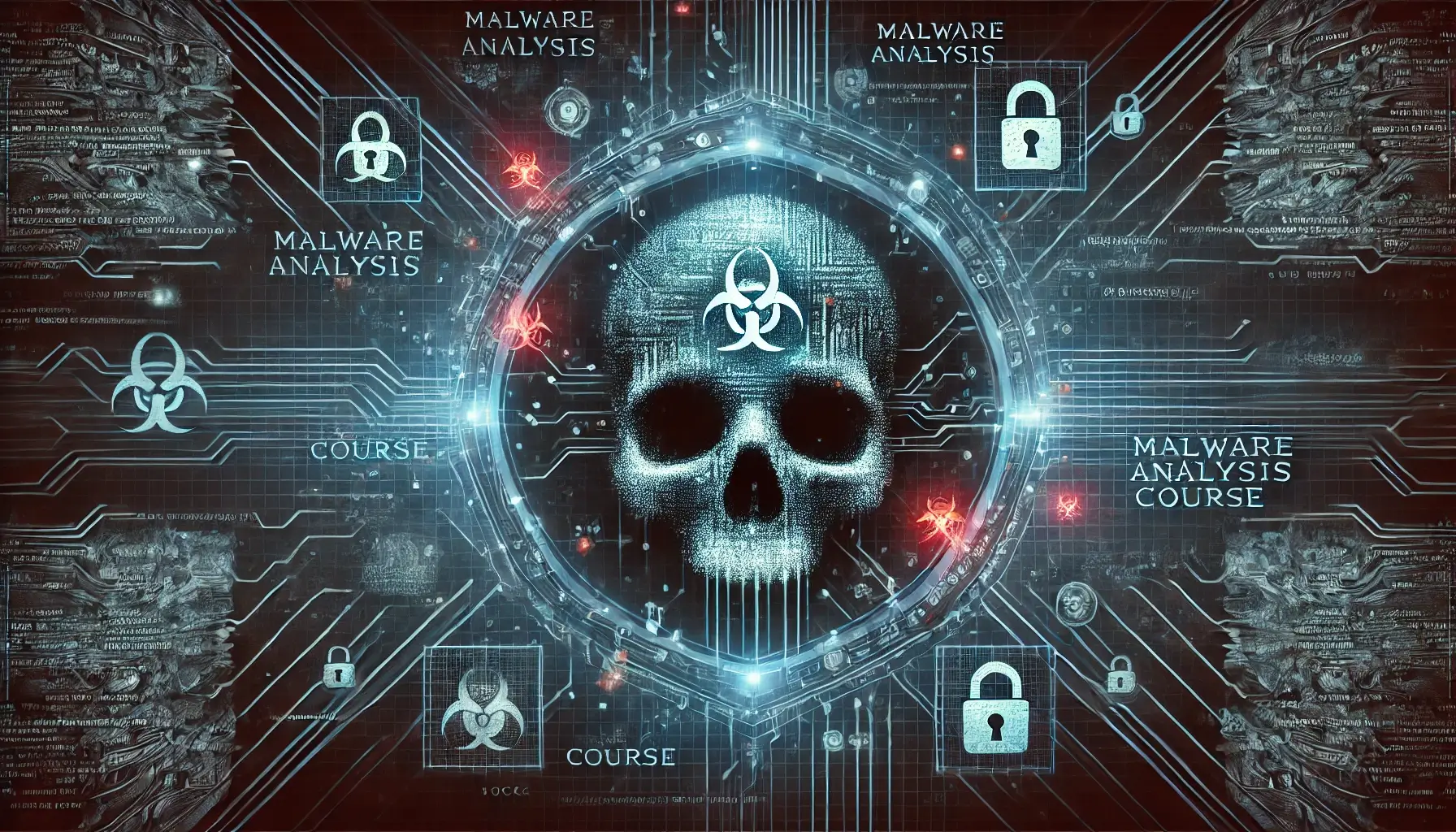
Malware analysis is the process of examining the characteristics or behavior of specific malicious software, often for identification, mitigation, or attribution.


Malware Analysis Course
Become a digital detective and cyber guardian by mastering the art and science of malware analysis. In an age where cyber threats evolve at breakneck speed, your expertise in dissecting and neutralizing malicious code will make you an invaluable asset to organizations worldwide, placing you at the forefront of cybersecurity defense.
Our comprehensive Malware Analysis course equips you with the skills to:
Through hands-on labs and real-world case studies, you'll dive deep into:
By the end of this course, you'll possess the expertise to unravel the most sophisticated cyber threats, contributing directly to the security of businesses, governments, and individuals in our interconnected world.
Mastering malware analysis opens doors to exciting and critical roles in cybersecurity:
Our curriculum is designed to transform you into a proficient malware analyst:
Using a SIEM (Security Information and Event Management) platform, it's possible to collect logs from the network and filter them for further analysis and identification of problematic patterns that pose a threat. SIEM can scan vast amounts of information and alert to dangers, comparing data groups where each individual might be considered normal, but when the platform performs its function and identifies certain patterns, it can alert to a threat.
The use of SIEM is common and highly sought after in the local and international cybersecurity industry among many organizations. In this course, we will learn practically about hackers' methods for planting malware, worms, Trojan horses, and any other malicious action that serves the purpose of infiltration to perform malicious acts in the digital space. Through learning Malware analysis and practical use of SIEM, one can gain diverse and practical knowledge to perform effective and important actions as cybersecurity professionals, thus bringing great value to defense efforts against hackers.
Advanced Threat Detection with SIEMAs part of our comprehensive Malware Analysis course, we dive deep into the use of Security Information and Event Management (SIEM) systems:
By mastering SIEM alongside malware analysis, you'll be equipped to detect, analyze, and respond to sophisticated cyber threats in real time. This combination of skills is highly sought after in the cybersecurity industry, both locally and internationally, positioning you as a valuable asset in the fight against cyber criminals.
A basic level of computer literacy is expected, using a computer running Windows.
These skills and techniques prepare you for roles such as Malware Analyst, Threat Researcher, Cybersecurity Analyst, and Incident Response Specialist. They provide a comprehensive foundation for understanding, dissecting, and defending against malicious software in various environments.
Ch. 1
Introduction to Malware
Ch. 2
Vulnerability
Ch. 3
Malware Detection
Ch. 4
Malware Analysis Techniques

Benny Cohen
Embedded Academy Founder and CEO
As a long-time veteran in the technology industry, Benny Cohen combines a deep passion for technology with extensive field experience. With a B.Sc. in Electronics Engineering and an M.Sc. in Communication Engineering, he has spent over 20 years developing software and hardware systems, including the last few years focusing on the cybersecurity industry. In addition to his role as the company founder & CEO, Benny also operates as a hands-on practitioner who specializes in penetration testing and has conducted significant security assessments for leading enterprises and security companies worldwide. His approachable teaching style and real-world expertise make learning both engaging and relevant.
Malware analysis is the process of examining the characteristics or behavior of specific malicious software, often for identification, mitigation, or attribution.
The primary role of a malware analyst is to identify, examine, and understand various forms of malicious software and their delivery methods. This malware includes all the diverse forms of adware, bots, bugs, rootkits, spyware, ransomware, Trojans, viruses, and worms.
According to the information security studies regulations, it is possible to take repeat lessons and receive additional help and guidance from the college staff.
